Three out of four drug launches fail to meet forecasts, resulting in an average loss of $200 million in total sales per asset. Increased competition and decreased product life cycles also limit the time that teams have to reach healthcare providers (HCPS) pre-launch, adding pressure to an already challenging environment.
The ability to deliver messaging that resonates with the right HCPs, quickly, is critical to launch success. Biopharmas that expand and accelerate their segmentation and targeting efforts with an integrated, modern data approach have more efficient and impactful interactions. This leads to higher levels of engagement, adherence, and ultimately, better patient outcomes.
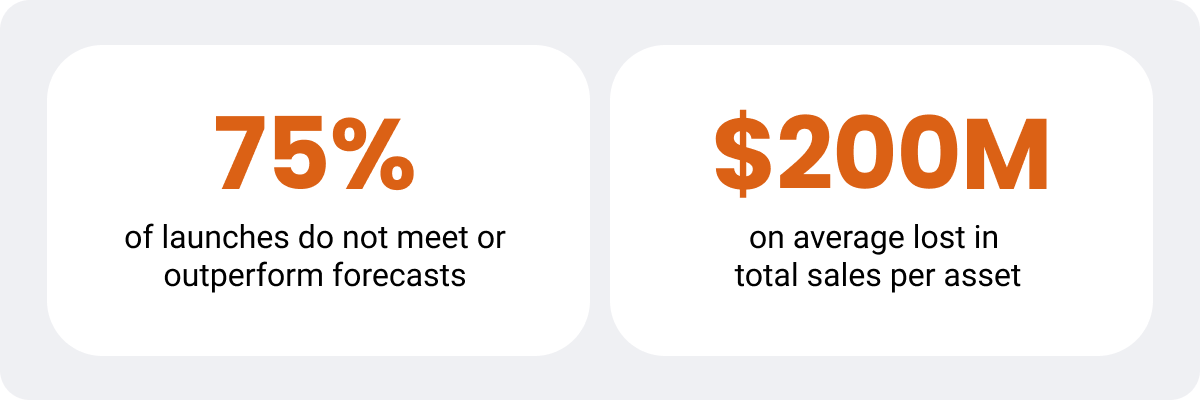
Precise engagement as a competitive advantage
More complex therapies and numerous ways to engage HCPs make it challenging to create meaningful interactions. HCPs, like other consumers, want personalized engagement, including relevant content delivered on their preferred channel.
However, a survey by Digital Health Coalition shows that only 27% of HCPs think biopharma interactions are tailored to their needs. And, only 31% agree that biopharmas do a good job for delivering relevant content.
HCP access also continues to decrease due to various factors, including increased market consolidation, health system restrictions, growing patient loads, and the diversity and complexity of modern medicine. With the rise of omnichannel engagement, it’s important to consider access and channel preferences when developing your go-to market strategy.
Segmentation and targeting provide deeper insights into the diverse needs, preferences, and behaviors of different patient populations, HCPs, and HCOs. By better understanding your customer, you can tailor messages and interventions to ensure they resonate. You can also allocate resources more efficiently to focus on high-potential segments most likely to benefit from your treatments and therapies. This precise engagement can help you break through the noise and give you a competitive advantage.
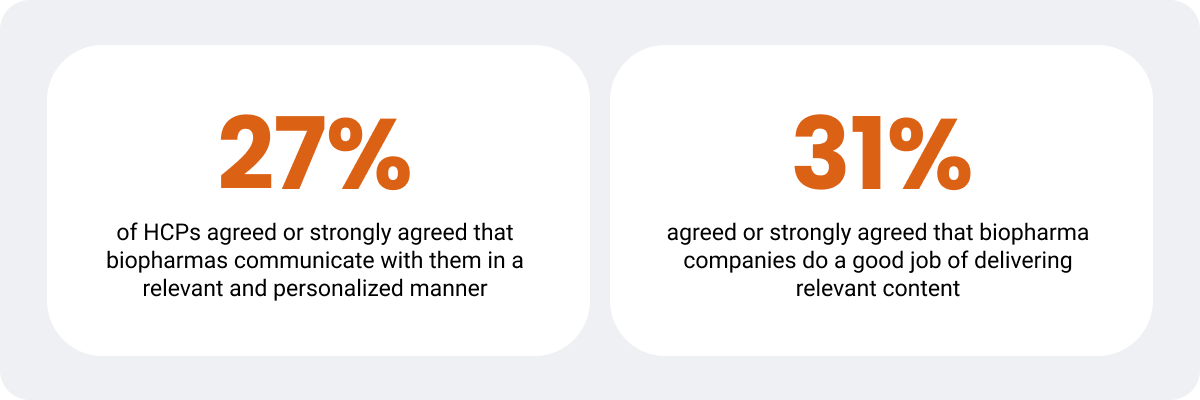
Customer Story: Identifying nearly 2,000 more HCP targets in a niche market
An emerging biopharma was preparing for a rare disease drug launch. It wanted to explore potential indicators of prescribing opportunities, segment healthcare providers based on their behaviors, and drive multichannel cycle plans to reach its niche market and grow its number of targets.
Using Veeva Compass Patient and Veeva Compass Presciber, the team analyzed the full patient journey and identified addressable patient and key prescribing indicators. These key indicators were aggregated at the HCP level to quantify potential. They further ranked the prescribers based on the opportunity, helping the team better align and drive key messages.
The biopharma identified almost 2,000 new targets, increasing the number of targets and helping to personalize outreach and engagement. “With Veeva Compass, we accelerated our product launch by giving field teams a more complete and timely view of our customers,” says the vice president, operations, rare disease.
Legacy methods don’t support today’s complex care
Despite how important segmentation and targeting can be as a competitive advantage, many biopharmas are still encumbered by legacy methods that are often outdated, inefficient, and limited in scope. Some common challenges with legacy methods include:
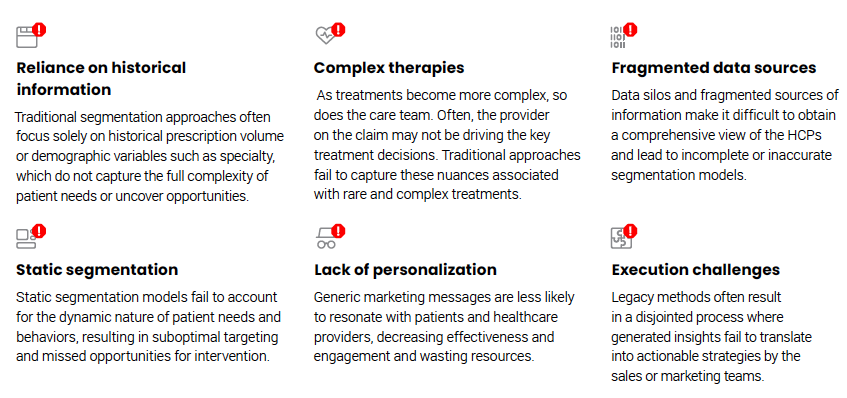
These outdated methods can lead to missed opportunities to connect with the right HCPs.
Customer Story: Moving beyond legacy methods to uncover 31,000 new treaters
A global biopharma with a pre-launch therapeutics in the neuroscience space wanted to create and profile individual HCP segments tied to specific prescribing behavior so they could better plan launch activities and outreach.
To find and understand the current HCP prescribing trends within its market, the team partnered with Veeva who helped them analyze three different types of data: patient claims data (Veeva Compass), HCP demographic data (Veeva OpenData), and KOL customer intelligence data (Veeva Link).
Through this analysis, the team identified HCP prescribing trends and used this data to create a segmented list of HCPs for its launch. The HCPs were prioritized based on market opportunity and profiled based on treatment behavior, scientific expertise, HCO affiliations, and demographic features. Overall, that analysis uncovered 31,000 treaters the company could not access through legacy methods.
A new approach to targeting and segmentation
Given the drawbacks of legacy data, biopharmas have the opportunity to rethink their approach to HCP engagement, planning, and execution.
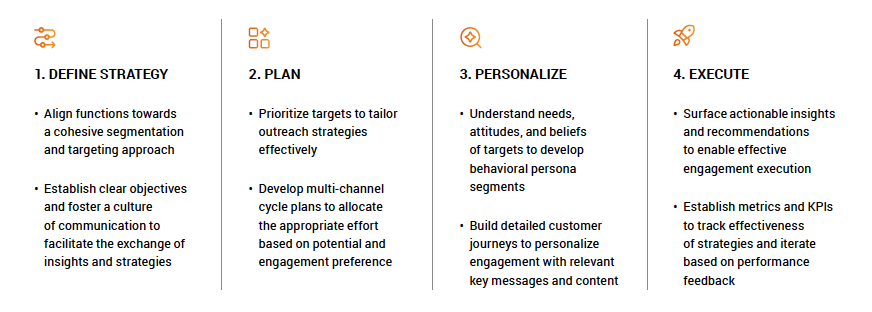
A connected engagement strategy can help you engage more effectively with the right HCP. It focuses on three core dimensions:
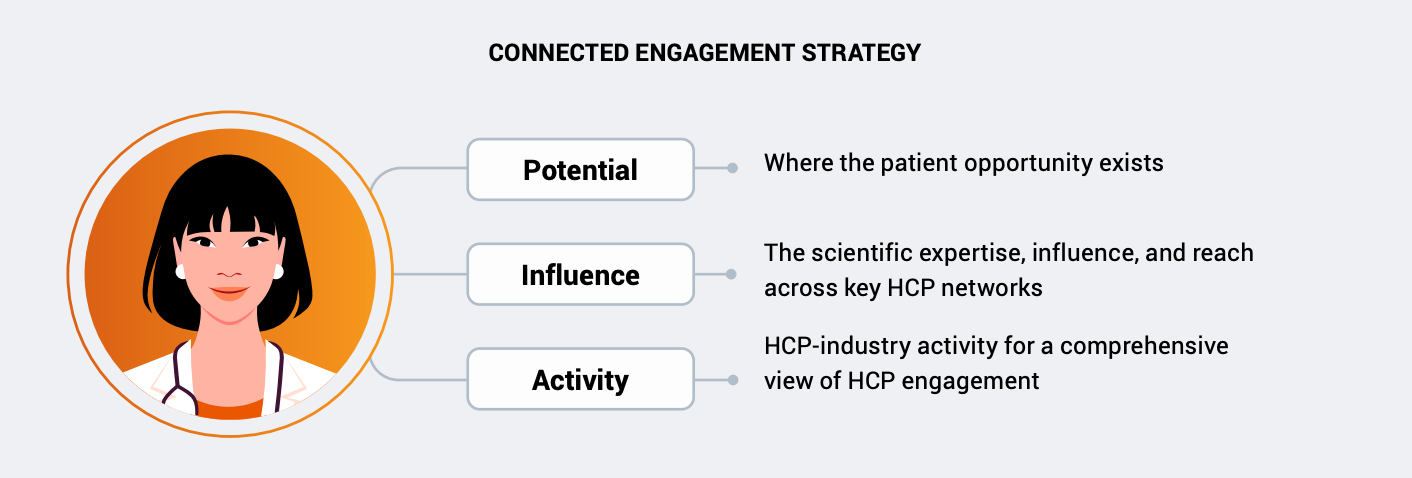
By concentrating on these key dimensions, stakeholders across the organization can better align on who to target (value segmentation) and how to best engage with these HCPs (behavioral segmentation).
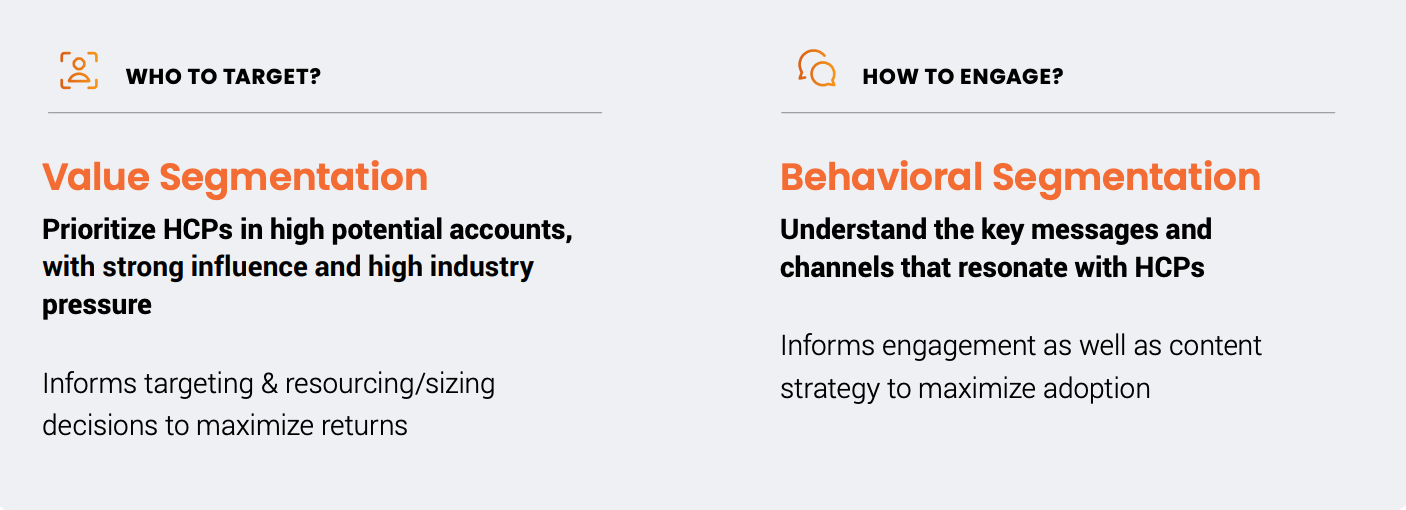
Value segmentation helps you prioritize targets based on patient opportunity, prescribing behavior, and other relevant factors that help create more tailored outreach strategies. This also supports the development of multichannel cycle plans (MCCP) that allocate the appropriate effort based on the target potential impacts and engagement preferences.
But to capture the nuances of today’s complex therapies, teams need modern commercial data sources that:
- Include both retail and non-retail products
- Show a longitudinal view that reflects the full patient journey by matching more sources with more accuracy
- Update daily so field teams can react to the dynamic nature of patient needs and behaviors and drive faster and more timely engagement
Behavioral engagement helps you understand your targets’ needs, attitudes, and beliefs to develop persona segments based on their behaviors. This type of segmentation allows you to build detailed customer journeys for each persona and personalize engagement experiences with relevant messages and content. Behavioral segmentation should also consider HCPs’ engagement preferences. Leveraging industry-wide engagement data can reveal how HCPs prefer to interact with the life sciences industry including accessibility and channel preferences, leading to more meaningful engagements.
Teams can jointly personalize engagement through journeys connecting plans with content, tools, and data. While MCCP incentivizes field touchpoints with the highest-value customers, journeys ensure these touchpoints are connected and personalized.
Integrating with the field
Segmentation and targeting efforts manifest in various actions, including NPP strategies, resource deployment, and the creation of key messages tailored to specific HCPs and HCOs. However, while you can create infinite segments based on diverse datasets, you most likely do not have an array of infinite tactics.
Therefore, teams need to translate these data-driven insights into practical, executable plans, including how and when to engage with different segments of HCPs and HCOs. With limited access to HCPs, the field plays an important part in helping to optimize these engagements and ensure that each interaction is meaningful.
The future of segmentation and targeting
The future of segmentation and targeting relies on a connected engagement strategy. Integrated data and software platforms facilitate seamless collaboration and data sharing across stakeholders, enabling more holistic and patient-centric segmentation and targeting strategies. Advancements in data, software, and analytics will enable hyper-personalized engagement experiences tailored to specific needs, preferences, and profiles of healthcare providers and patients.
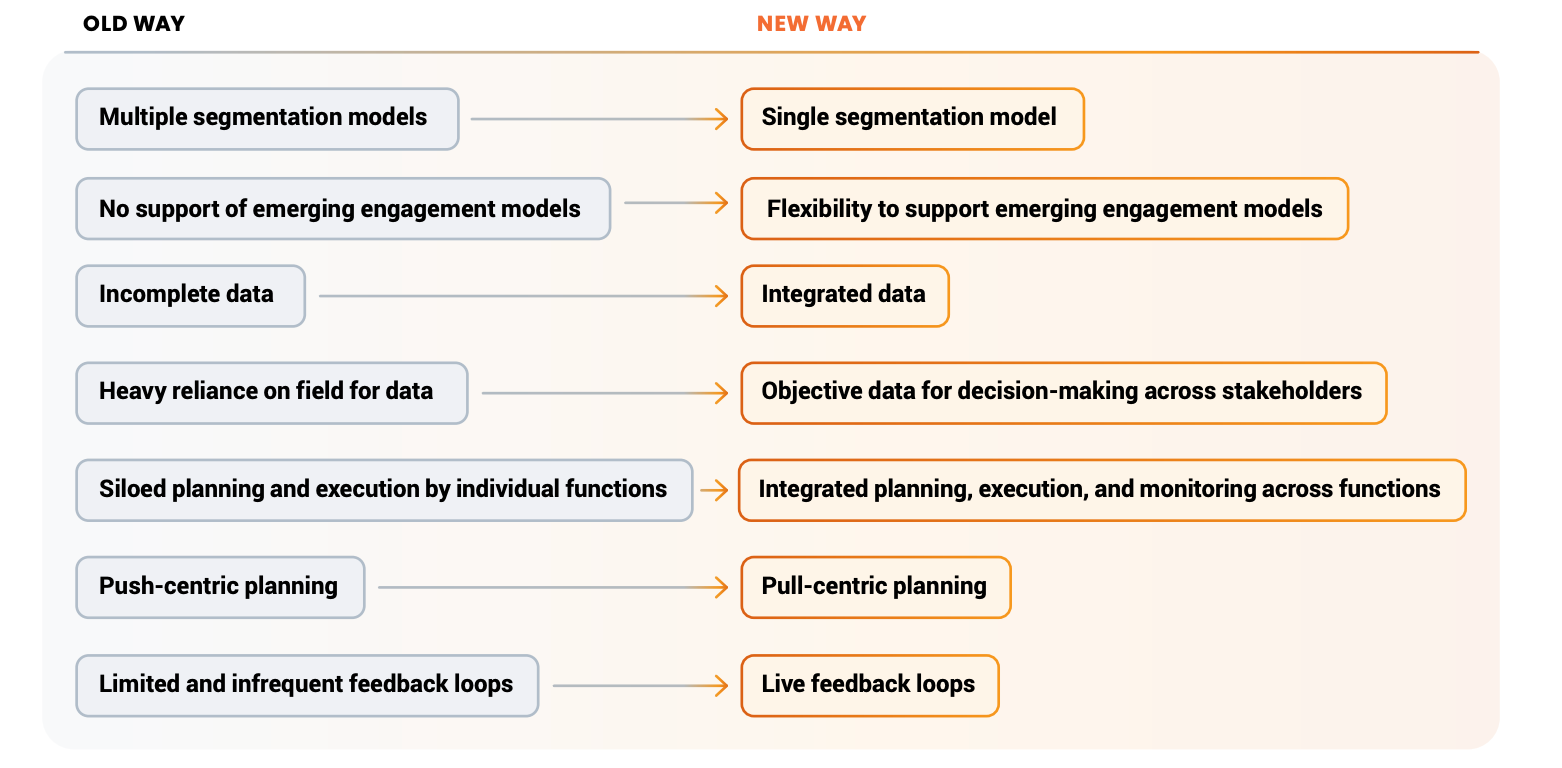
Conclusion
The current launch environment is becoming increasingly challenging with more complex treatments and increased competition. To succeed, it’s essential that brands can quickly identify the right HCPs and tailor engagement strategies for more meaningful interactions. By embracing new capabilities and adopting a patient-centric approach, biopharmas can enhance segmentation and targeting strategies to better meet the needs of HCPs and drive better patient outcomes.
Sign up for a free assessment to see how Compass data can work for you.
